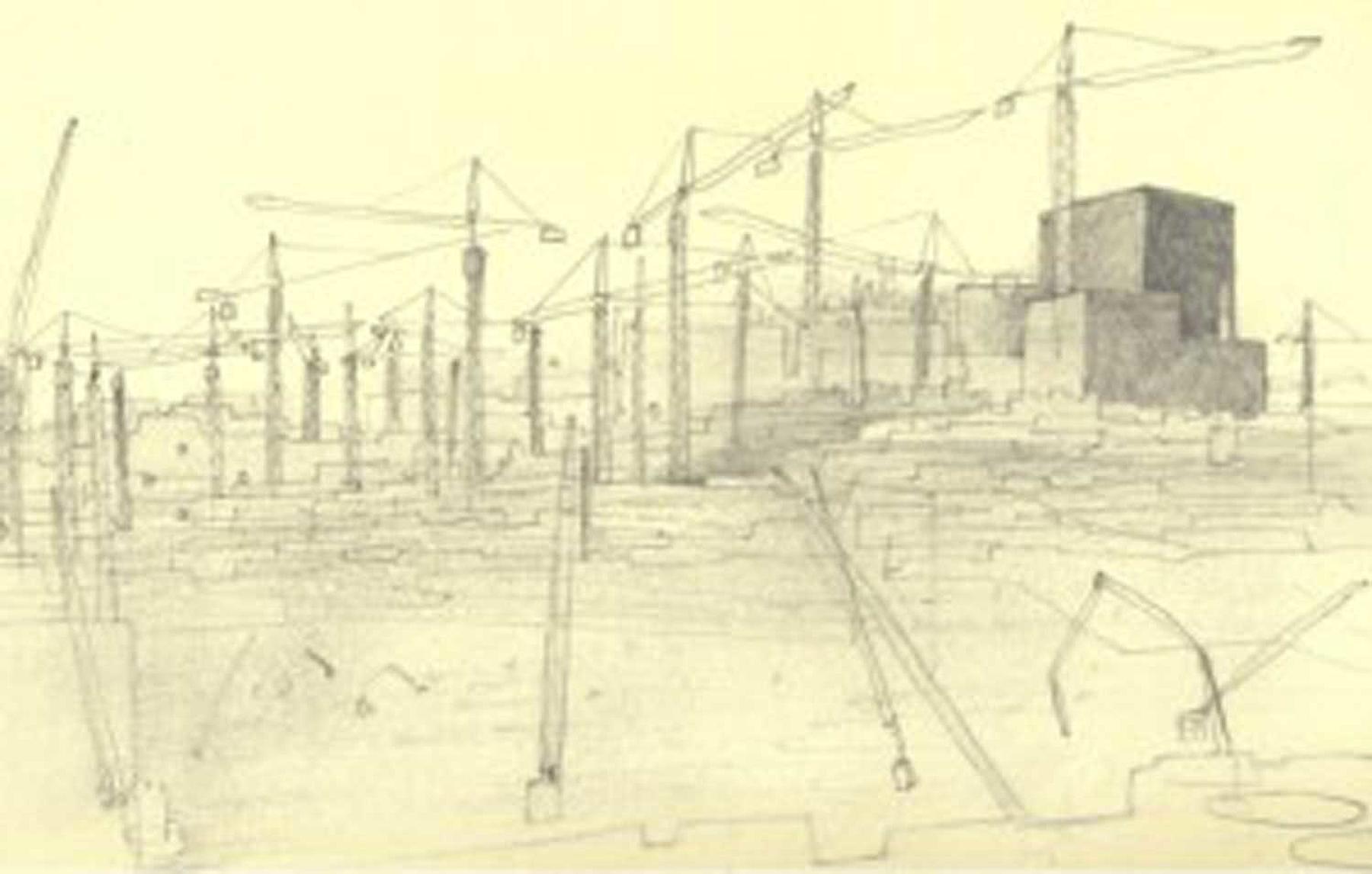Cranes At Nightfall: G7
I am on the roof of the Mercure Hotel by the ice-cold pool. There is a breeze. It is late afternoon, early evening, and as I count the cranes – ten, twenty; twenty two, twenty four ? – I lose count. They seem to be vanishing in the gathering dark, their yellow frames merging with the mid-tones of the sky and the fast changing horizon. Their pinnacles point skywards and their frames are rooted amongst the hardening frames of the basement car-parks.
The enveloping quietness is broken intermittently by the harsh, abrasive sound of the diggers, breaking the rock and making the gypsum crystals into powder as they go.
These sharp sounds of stone and metal are softened by the night, falling like a blanket. They seem to echo across the city, in stereophonic time.
Everything is in motion, nothing is static. In this vast space – the largest hole in the ground I have ever known – there are thousands of people working. Some of them will work all night; some are so small they are invisible.
The whole scene is in slow motion of course; the cranes slowly dancing and the concrete pumps reaching their long necks just as they are bid.
The fall from day to night is fast and the thousand floodlights blind me now, broken by the flashing orange warning lights and the faraway shimmer of the West Bay horizon. This grand project of Msheireb is like History speeded up, and moments like this are Time slowed down.
